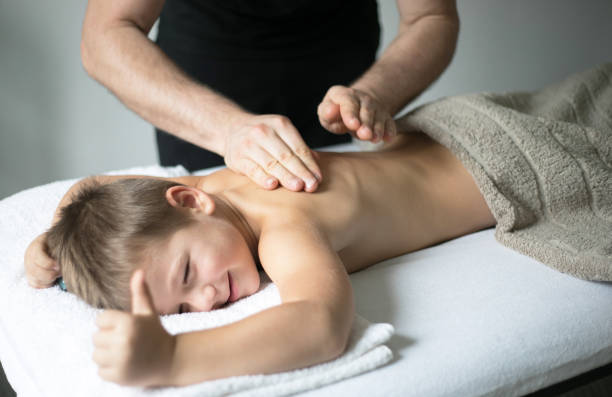
Before your child goes to their first physiotherapy session, it’s best to know what to expect. This article will cover a typical session, Exercises to do at home, and biofeedback.
Typical physiotherapy session
As a parent, you may wonder what a typical physiotherapy session for a child looks like. It is a time for the therapist to pick your child’s brains and customize treatment for them. It is helpful to plan to be in the room with your child during the session. Make arrangements for any siblings who may attend as well. Also, bring notes of developmental history and other concerns so the therapist can tailor treatment to your child’s needs.
The first appointment typically takes about 60 minutes. Your child will receive a thorough history of their symptoms and medical history. During this time, your child may become drowsy and require lots of fluids. You will also be required to stay by your child’s side throughout the session.
Exercises to do at home
The physical therapist will lead your child through a series of gentle stretches. You can do the same exercises at home to help increase joint flexibility and avoid contractures. These exercises can also help with the recovery process. These exercises will help your child improve motor control, lower leg strength, postural stability, and core strength. The exercises will also encourage typical gait mechanics.
Musculoskeletal problems can be a huge burden for your child. More than 30 percent of Canadian children are affected by these conditions. These conditions can lead to medical problems later in life if left untreated. Exercise can help your child return to active living.
The exercises from physioinq.com.au/home/qld/brisbane/paediatric-physiotherapy are fun for your child. Pick your child’s favourite activity. It could include cycling, dancing, or playing outside. You can also incorporate bodyweight exercises into the regimen.
Children who have cerebral palsy should play and move around. It’s essential to focus on what your child can do, not what he can’t. Being active will help prevent pressure sores, decreased metabolic rate, and muscle atrophy. It can also help prevent many other health issues.
One exercise that may not be recommended after surgery is the push-back exercise. In this exercise, you bend your elbows to 90 degrees. Then, hold the position for five seconds. Once you feel comfortable with it, relax and repeat.
Biofeedback
Biofeedback is a treatment that uses a computer to measure how the body functions. It can help your child understand and control their body parts. The biofeedback system helps a child learn to relax muscles and improve body function.
There are three main types of biofeedback. The first one is done by placing electrodes on your child’s anus, abdomen, or bony part of the hip. The sensor is then connected to a computer through wires. During this session, your child remains fully clothed.
Biofeedback can help manage physical and emotional symptoms of conditions such as post-traumatic stress disorder. It can also be used to decrease medication or reduce side effects. Biofeedback training is best used in conjunction with other treatment options. It reduces patients’ dependence on the therapist and helps them become self-reliant.
Biofeedback can also help with chronic pain and other health problems. It can help retrain muscles in the pelvic floor, which are essential for normal bowel and bladder function. With biofeedback, children can learn to control these muscles and improve their ability to empty and store urine.
Another type of biofeedback is wearable technology. It uses sensors that track breathing patterns and give users feedback. These devices help patients to breathe more slowly and deeply.
Another benefit of biofeedback is that it can help children with bowel problems. Children with bowel problems often experience difficulties in coordination between their internal and external sphincters. Typically, these muscles are closed to prevent the leakage of stool, but biofeedback helps children relax their internal and external sphincters simultaneously. These muscles also coordinate with their pelvic and abdominal muscles. Any mismatch in these muscles can lead to pain or constipation.
While physical therapists are essential for using biofeedback, a biofeedback technician is necessary for other modalities. Ultrasound, EEG, and skin conductance require an experienced technician. Biofeedback technicians are certified by the Association for Applied Psychophysiology and Biofeedback. They are responsible for overseeing the treatment of the patient, as well as coordinating with other therapies.
Biofeedback is a method that harnesses the power of the mind to promote relaxation and improve performance. Biofeedback uses finger or electrode sensors that measure blood pressure, breathing rate, and muscle activity. The results are displayed on a computer screen.
